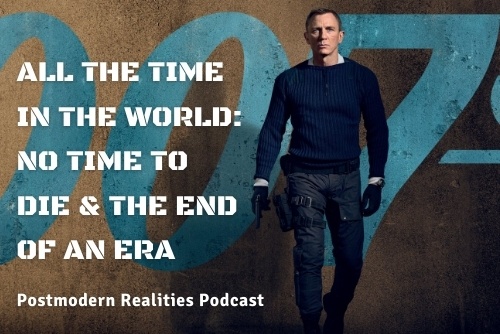No Time to Die is the final outing for actor Danial Craig’s run as 007. Looking back on Daniel Craig’s tenure, it’s hard to imagine a time in which he did not don the tuxedo. Though he has not appeared in the most films (that distinction goes to the late Roger Moore, who appeared in seven), he is nevertheless the actor who has held the role the longest, with fifteen years having passed since his debut in 2006 and his fifth (and final) film in 2021. So thorough has been his reinvention of the character that Craig’s time as Bond is and will continue to be looked upon as an asterisk in the history of the sixty-year-old film series, a unique thing emerging from a cultural milieu that has witnessed twin towers fall, whistles blow, and women become ascendant.
Director Cary Joji Fukunaga’s No Time to Die (2021) marks the definitive end of Craig’s time as Bond—and what an ending it is. The circle closes, every dangling plot thread is tied off. By the time a weary, heart-broken Bond stands bloodied and dying in the cold light of day, staring death full in the face and embracing it, all of the villains who sought to harm him, his friends, his country, and the world are gone. “There’s no one left to hurt us anymore,” says Madeleine Swann (Léa Seydoux)—and she’s right. In the end, Bond emerges victorious but at a great cost.
The key to understanding the way No Time to Die chooses to tell its story lies in these mythological underpinnings. In the Greek myth, Heracles’s story ends when he is tricked into wearing the poisonous tunic of Nessus, and he chooses to incinerate himself rather than live alone and only in pain.
No Time to Die, at long last, recaptures to some degree this unique vision of writer Ian Fleming. Bond’s hedonism in the novels is frequently treated as his defense against this uniquely Christian notion of “acedia,” which medieval theologian Thomas Aquinas defined as trisitia de bono spirituali, “sadness in the face of spiritual good.” Ian Fleming’s work can be described as Christ-haunted. Bond, like Fleming, was a man haunted by goodness. In his final moments in No Time to Die, Bond finally surrenders himself to it.
This Postmodern Realities episode is a conversation with Journal author Cole Burgett about his online-exclusive article, “All the Time in the World: No Time to Die and the End of an Era” **Editor’s Note: This article contains spoilers for the 2021 James Bond film No Time to Die.**
Please note this article will be fully accessible by the public in the future, to get early access to read it now, please see our FAQ section on Early Access to Online-Exclusive Articles by clicking here.
We’d also like to invite you to subscribe to the Journal. To subscribe to the Journal, please click here.
When you to subscribe to the Journal, you join the team of print subscribers whose paid subscriptions help provide the resources at equip.org that minister to people worldwide. These resources include our ever growing database of over 1,500 articles, as well as our free Postmodern Realities podcast.
Another way you can support our online articles is by leaving us a tip. A tip is just a small amount, like $3, $5, or $10 which is the cost for some of a latte, lunch out, or coffee drink. To leave a tip, click here
Other articles and Postmodern Realities podcasts featuring this author
Episode 251 Growing Up and Letting Go in CODA
Growing Up and Letting Go in CODA
Episode 242: Friendship and Fatherhood in Pixar’s Luca
Friendship and Fatherhood in Pixar’s Luca
Episode 239: No Us Without Him: The Life, Death, and Resurrection of Zack Snyder’s Justice League
No Us Without Him: The Life, Death, and Resurrection of Zack Snyder’s Justice League
Episode 234: Star Wars Happy and Glorious in The High Republic
Episode 227 Catharsis and the Power of Release in WandaVison
Catharsis and the Power of Release in Wandavison
Episode 222 Deconstructionism and the Gospel of Hope in Logan
Deconstructionism and the Gospel of Hope in Logan
Episode 218: Wonder Woman 1984: The Truth Is Enough.
Wonder Woman 1984: The Truth Is Enough.
Episode 214 Star Trek’s Christopher Pike: An Old Fashioned Hero For Our Cynical Times
Star Trek’s Christopher Pike: An Old- Fashioned Hero for Our Cynical Time
